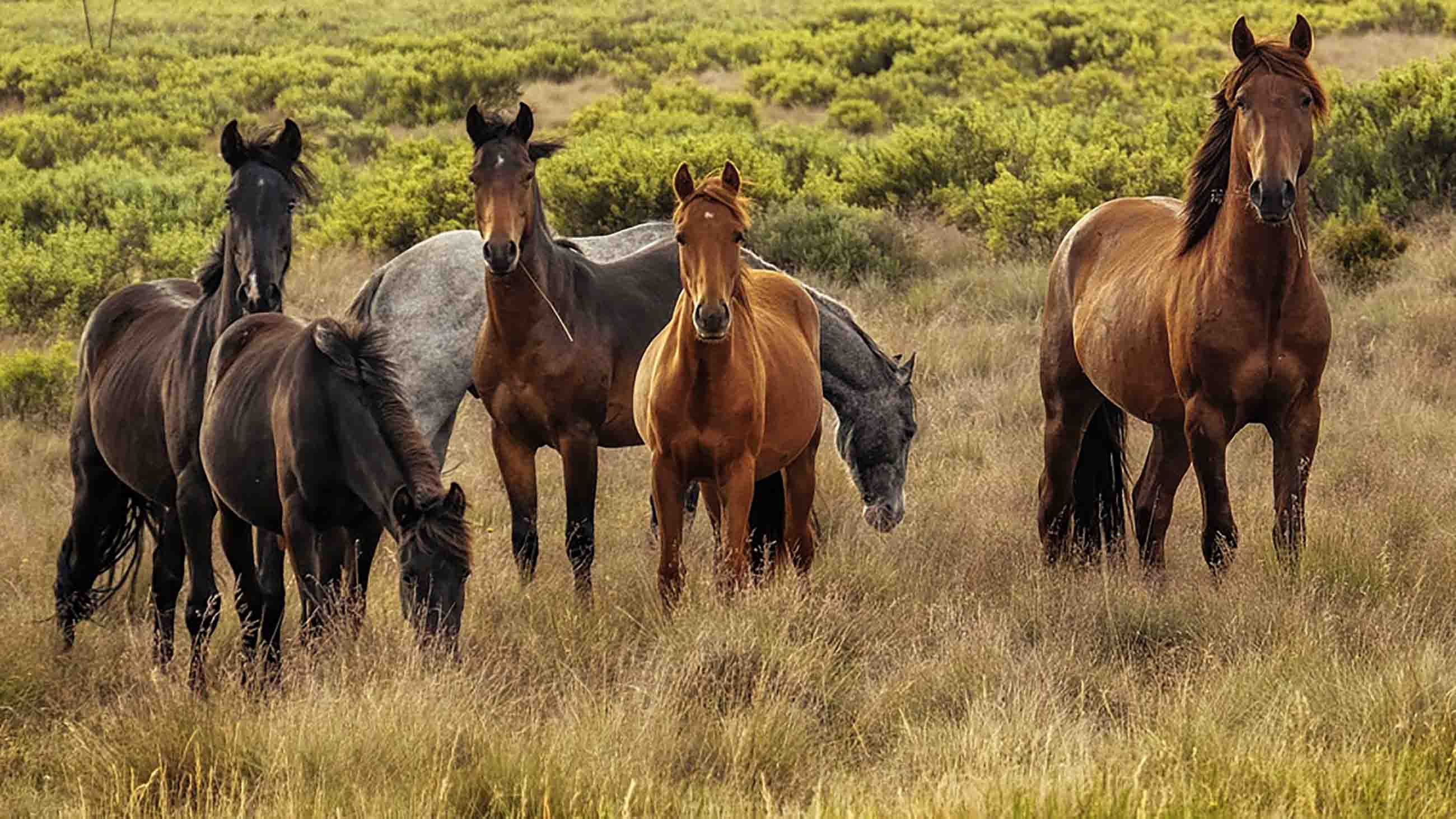
Brumbies, wild horses of Australia, hold a special place in the country's heart and landscape. Brumbies roam free, primarily in the Australian Alps and other parts of the country, embodying the spirit of adventure and freedom. Originating from lost or escaped horses in the early 19th century, these animals have adapted to survive in harsh environments. Their presence sparks debates between conservation efforts and the impact on native ecosystems. Understanding brumbies involves exploring their history, behavior, and the challenges they face today. This introduction to brumbies will shed light on fascinating aspects of these majestic creatures, from their survival strategies to their significance in Australian culture. Join us as we uncover 15 intriguing facts about brumbies, offering insights into their world and the ongoing discussions surrounding their existence in Australia's wild.
Brumbies, the wild horses of Australia, roam the high country and have become an iconic symbol of Australian wilderness and heritage. These majestic creatures, with their untamed spirit and resilience, have a fascinating story that intertwines with the history and environment of Australia. Let's delve into some intriguing facts about these remarkable animals.
What Are Brumbies and How Did They Come to Exist in Australia?
Brumbies are essentially wild horses in Australia, descendants of various breeds introduced by European settlers in the late 18th century. Their presence in Australia is a testament to the country's colonial past and the changes settlers brought to the native landscape.
-
Brumbies originated from horses brought to Australia by the First Fleet in 1788, which included various breeds such as Thoroughbreds, Arabians, and Draught horses. Over time, these domestic horses escaped or were released into the wild, adapting to the Australian landscape and eventually becoming the wild Brumbies we know today.
-
The term "Brumby" is believed to have derived from an Aboriginal language, though its exact origins are unclear. Some theories suggest it came from the word "baroomby" meaning "wild" in some Aboriginal languages.
The Habitat and Distribution of Brumbies
Brumbies have adapted to various environments across Australia, from the snowy mountains to the arid outback, showcasing their incredible resilience and versatility.
-
The largest populations of Brumbies are found in the Australian Alps, particularly in the Kosciuszko National Park. These areas offer vast grasslands and alpine meadows, providing ample food and space for the Brumbies.
-
Besides the high country, Brumbies can also be found in Queensland, the Northern Territory, and Western Australia, each group adapting to its unique environment. For instance, those in the Northern Territory often inhabit more arid regions, showcasing their adaptability.
The Controversy Surrounding Brumbies
While Brumbies are admired by many for their beauty and as a symbol of Australian heritage, they are also the subject of environmental and management debates.
-
Environmentalists argue that Brumbies cause significant damage to the delicate alpine and bushland ecosystems. Their hooves can lead to soil erosion, and their grazing habits can negatively impact native vegetation and animal species.
-
On the other hand, cultural and heritage groups see Brumbies as living symbols of Australia's settler history and argue for their protection. This has led to heated debates on how to best manage Brumby populations while protecting Australia's natural heritage.
Brumbies in Culture and Legend
Brumbies hold a special place in Australian culture, inspiring stories, poems, and even legislation aimed at their protection.
-
The legend of the Brumby holds a significant place in Australian folklore, epitomized by Banjo Paterson's poem "The Man from Snowy River," which celebrates the skill and bravery of those who could capture or ride these wild horses.
-
Brumbies have also inspired modern efforts to protect them, such as the passing of the "Brumby Bill" in 2018 in New South Wales, which acknowledges their cultural significance and seeks to manage their populations in a humane manner.
The Future of Brumbies
The future of Brumbies in Australia is uncertain, with ongoing debates about their management and conservation.
-
Conservation efforts and management plans for Brumbies vary by state and territory. Some areas have implemented culling, while others prefer rehoming or fertility control measures to manage populations.
-
Advances in technology and conservation strategies offer hope for a balanced approach to managing Brumby populations while protecting Australia's ecosystems. For example, GPS tracking and aerial surveys help in understanding their movements and impact on the environment.
-
Research into the genetic diversity of Brumbies is also providing valuable insights into their health, adaptability, and the potential benefits they offer in terms of genetic resources for future horse breeding.
-
Public opinion plays a significant role in the management of Brumbies. Awareness campaigns and public education about the ecological impact of Brumbies, as well as their cultural significance, are crucial in shaping policies and practices.
-
The involvement of Indigenous communities in the management of Brumbies is gaining traction, recognizing their traditional knowledge and connection to the land. This collaborative approach aims to find solutions that respect both cultural heritage and environmental conservation.
-
Adoption programs for Brumbies have shown success, with many horses being trained and rehomed. These programs not only help manage wild populations but also highlight the Brumby's versatility and suitability as riding and companion animals.
-
Finally, the story of the Brumby is a reminder of the complex relationship between humans and the natural world. It challenges us to find ways to coexist with wildlife, respecting both our cultural heritage and the need to protect fragile ecosystems.
A Final Canter Through Brumby Facts
We've galloped through the fascinating world of Brumbies, Australia's wild horses, uncovering their history, challenges, and the ongoing debate surrounding their management. These creatures, emblematic of the Australian bush, represent a complex blend of beauty and controversy. Their story is not just about survival but also about the intricate balance between conservation and heritage. As we've seen, efforts to protect the environment while honoring the Brumby's place in Australian lore are ongoing. Whether through controlled management or conservation initiatives, the goal remains to ensure that Brumbies can continue to roam the high country without causing undue harm to native ecosystems. Their tale is a poignant reminder of the delicate dance between human activity and wildlife preservation, urging us all to consider our impact on the natural world.
Was this page helpful?
Our commitment to delivering trustworthy and engaging content is at the heart of what we do. Each fact on our site is contributed by real users like you, bringing a wealth of diverse insights and information. To ensure the highest standards of accuracy and reliability, our dedicated editors meticulously review each submission. This process guarantees that the facts we share are not only fascinating but also credible. Trust in our commitment to quality and authenticity as you explore and learn with us.


